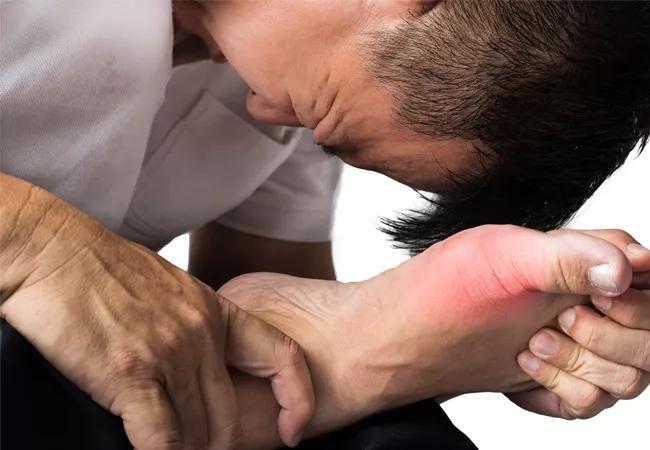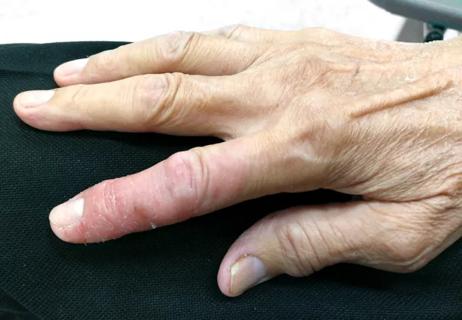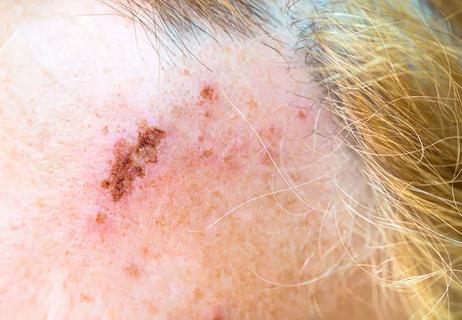Advertisement
Relationship in patients treated with pegloticase

Advertisement
Cleveland Clinic is a non-profit academic medical center. Advertising on our site helps support our mission. We do not endorse non-Cleveland Clinic products or services. Policy
Rheumatologists have long known that lowering plasma urate in patients with gout increases flares, but we don’t exactly why. Our recent study, presented at the 2018 Annual European Congress of Rheumatology, sought to elucidate more about this relationship by examining response to pegloticase, a recombinant uricase approved for gout refractory to oral urate-lowering therapy.
Two randomized clinical trials have shown an increase in gout flares during months one through three in patients treated with pegloticase compared with those receiving placebo. The results did not separate patients who responded to pegloticase with reduction in plasma urate levels from those who did not, and did not relate flares to plasma urate levels.
Using data from these trials, we defined responders as patients with plasma urate < 6.0 mg/dL ≥ 80 percent of the time from the week nine infusion to just prior to the week 13 infusion, and from the week 21 infusion to the week 25 final study visit. We defined gout flares as acute joint pain and swelling requiring treatment.
We observed increased mean flare frequency in the pegloticase group in the first three months of the trial contrasting with marked reduction during months three through six. The most marked increase in flares occurred in patients receiving q4 pegloticase (P = 0.0006); these patients also experienced the least marked decrease in months three through six (P = 0.0006). We performed multivariate linear regression analysis, which indicated that the only variable associated with flares in subjects treated with pegloticase was the absolute change in plasma urate prior to these events. Larger variations in uric acid were associated with increased flare occurrence (P = 0.002).
This significant association of flare frequency with fluctuations in plasma urate levels, which are more common with q4 administration of pegloticase, demonstrates that it appears more important clinically to avoid wide variations in uric acid in order to minimize flares. Thus, maintaining lowered uric acid levels consistently with the two-week approved regimen results in both a more rapid total-body urate reduction and a lower rate of acute attacks of gout.
Dr. Calabrese is Director of the R.J. Fasenmyer Center for Clinical Immunology in Cleveland Clinic’s Department of Rheumatic and Immunologic Diseases.
Advertisement
Advertisement

Husni Lab focuses on transforming management and treatment

E-coaching program is tailored for those with the disease

Sustained efficacy and safety

New long-term outcomes data offer insights

Evaluating PROs in immune-mediated diseases

A practical PRO biomarker databank

Distinguishing the cause of fevers in patients with lupus

Response to vaccine in inadequate responders to methotrexate